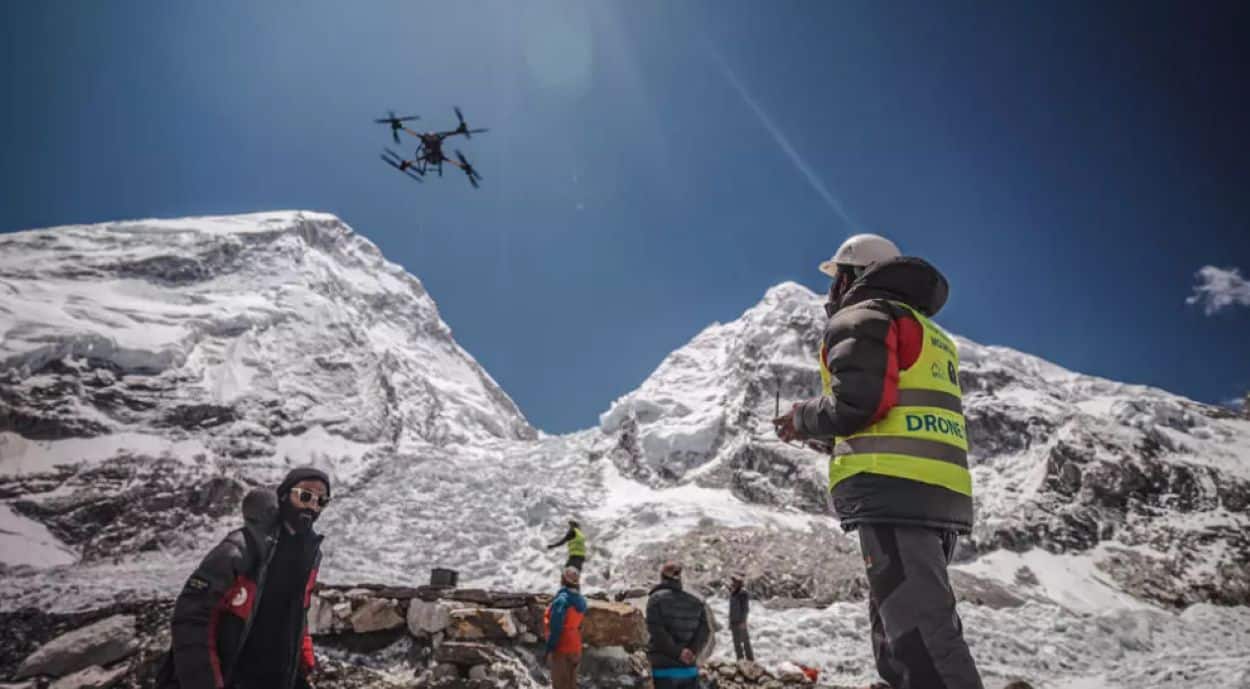On August 26, 2025, a team of drone operators utilised heavy-duty DJI FC 30 drones to remove 300 kilograms of trash from Camp 1 on Mount Everest, located at an altitude of 6,065 meters. This effort took place during the spring climbing season and represents a significant advancement in efforts to clean the world’s highest peak. The initiative, led by Nepal’s Airlift Technology, aims to address Everest’s reputation as the “highest dumpster” while also improving safety for climbers.
Two DJI FC 30 drones airlifted waste, including cans, gas canisters, and climbing gear, from Camp 1 to Everest Base Camp, a task previously reliant on costly helicopters or labour-intensive porter carries, per Reuters. Following a successful pilot program in 2024 and a significant cleanup effort that removed 641 kilograms of waste from Mount Ama Dablam, the $20,000 drones supplied by DJI demonstrated their cost-effectiveness and efficiency. Tshering Sherpa of the Sagarmatha Pollution Control Committee commented, “A drone can carry in 10 minutes what 10 people would take six hours to transport.”
In addition to trash removal, drones were used to deliver oxygen cylinders, ladders, and ropes, which minimised dangerous trips across the Khumbu Icefall. Nima Rinji Sherpa, a record-holding climber, praised the drones for saving “time and energy” for the route-fixing teams. This initiative is in line with Nepal’s efforts to promote eco-tourism, as a 2025 survey from Kathmandu University found that 60% of climbers support sustainable practices.
Everest’s trash problem, with 140 tons accumulated over decades, per National Geographic, threatens its ecosystem. The drone cleanup, partially funded by local authorities, supports Nepal’s $1.2 billion tourism industry. As climate change exacerbates glacier melt, similar to Pakistan’s GLOF issues, drones offer a scalable solution, with Airlift Technology planning to deploy them on Mount Manaslu in September 2025.






